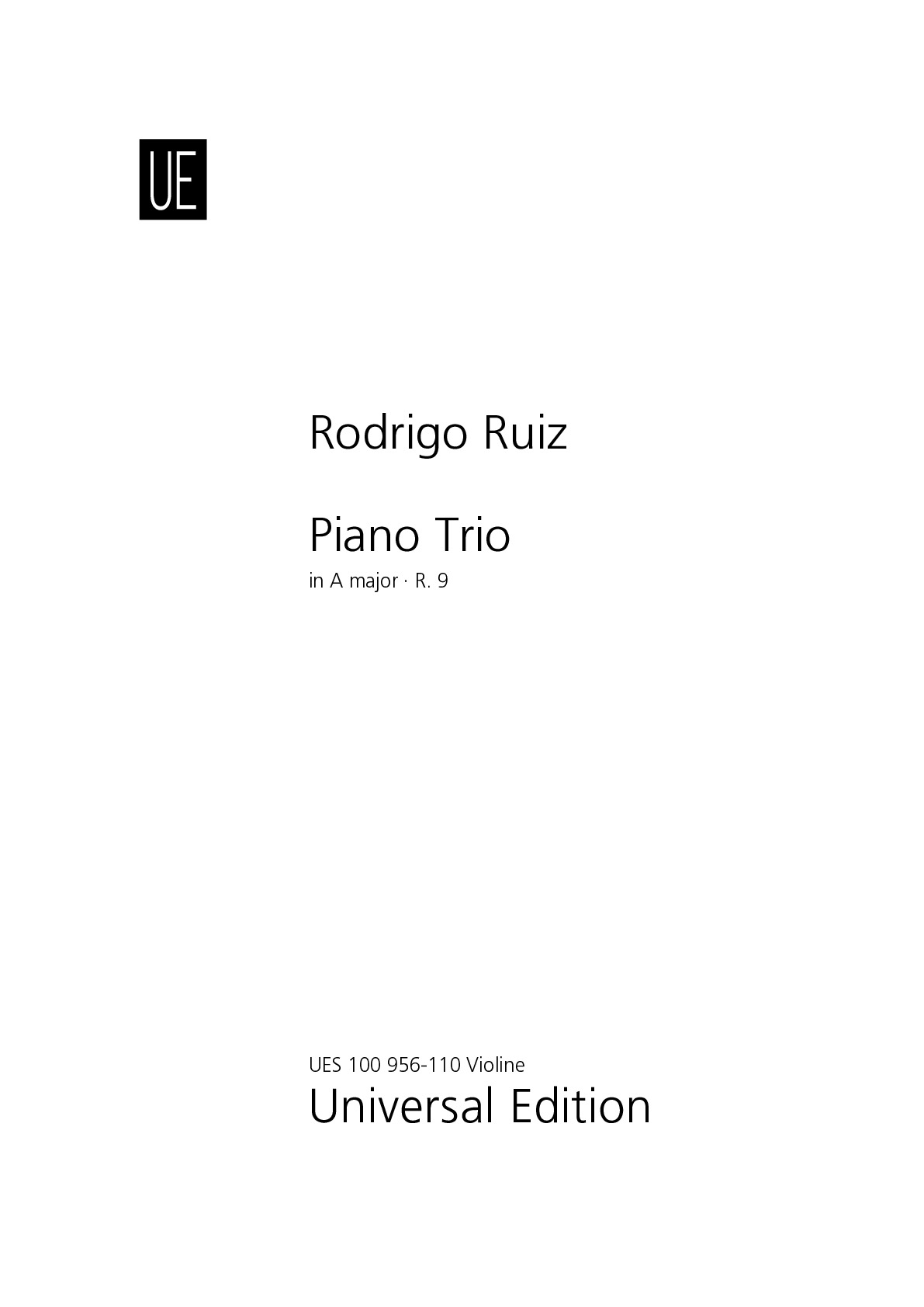.png)
Digital edition
immediately available as PDF
€14.95
Payments:
Shipping:
Rodrigo Ruiz
Violine (Piano Trio)
UES100956-110
Type: Stimme
Format: 210 x 297 mm
Pages: 20
Digital edition
immediately available as PDF
€14.95
Payments:
Shipping:
Audio preview
Description
The Piano Trio started as an improvisation: a set of stepwise, descending thirds over a tonic pedal in the low bass in the lovely key of A major. This falling-third-in-thirds idea became the central organic feature of the Trio’s language. This simple figure, heard from the very beginning, will eventually become embellished for the first time in the violin (b. 20) by an upbeat figure distinctly composed of an upper-neighbour turn on the dominant and a leap of a seventh. This clever addition is a hidden, octave-displaced melodic unfurling of the harmonic thirds of the original motif descending together from E to A. (The upper voice descends a third from E to C sharp; the lower voice does so from C sharp to A. The combined range is that of a descending fifth, from E to A.) This A-major idea is not what we hear at the start, though, for the Trio does not start on the tonic. Having Beethoven’s Piano Sonata No 21, op. 53 (“Waldstein”) fresh in my mind —with its wonderfully deceptive use of the tonic as dominant of the subdominant key right from the start— I thought I’d try my own little bit of fun: I inserted an incipit, a sort of introduction, with a supertonic pedal in the bass, which initially points to B minor, but later reveals itself as a predominant to the warm, sunny A major of the first theme, sung by the cello’s beautiful tenor.
Faced with the optimistic lyricism of the first movement, I knew I could not follow with something neither too slow nor too bright. This led me to the choice of A minor as the key of the second movement, even before I decided to settle on the idea of a Scherzo. The movement turned out to be a moody one, with Brahmsian flavours, vivid syncopations, nimble-fingered piano arpeggios, and a disguised return from its trio section back to the scherzo proper.
The Andante theme of the third movement was not the first idea in the movement to spring from my pen. Rather, an enjoyable improvisation engendered a particularly pleasing, lush, triplet-driven idea for the piano. This first of the variations to be created now sits near the second half of the movement, next to the Adagio. This slow variation is truly the heart of the movement. As the variations progress, they become more relaxed, more flexible, until reaching a finale that seemingly does away with them entirely. This finale, however, expands its reach into the other movements to work out their themes and motifs into the fabric of the third movement. This theme and variations takes up, more or less, the same time as the first two movements do together; this important symmetry balances the work rather nicely before it ends in a flurry of excitement with a resounding A-major, brilliant close.
Rodrigo Ruiz
Shasta, California
06 May 2020
More information
Type: Stimme
Format: 210 x 297 mm
Pages: 20

